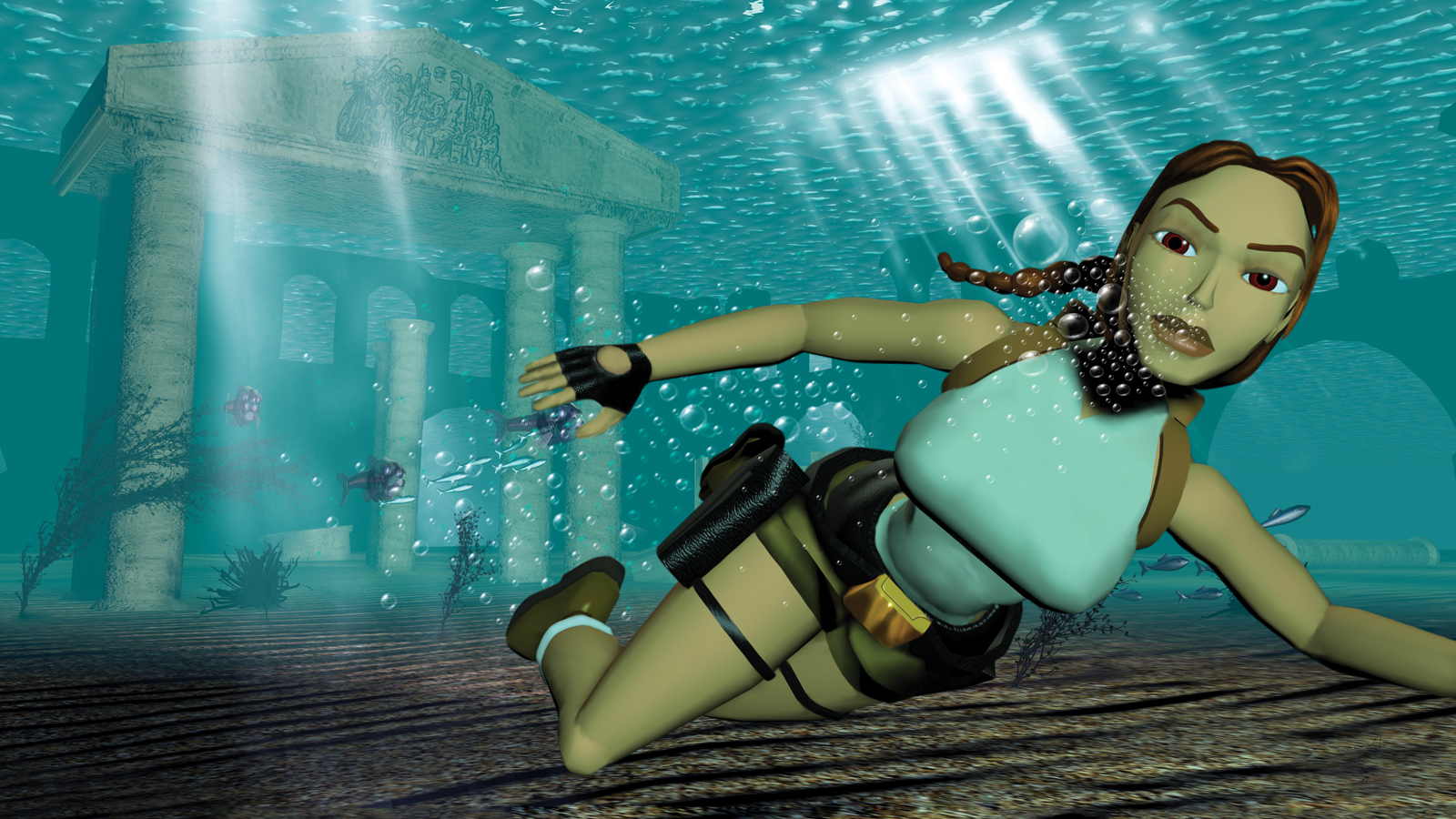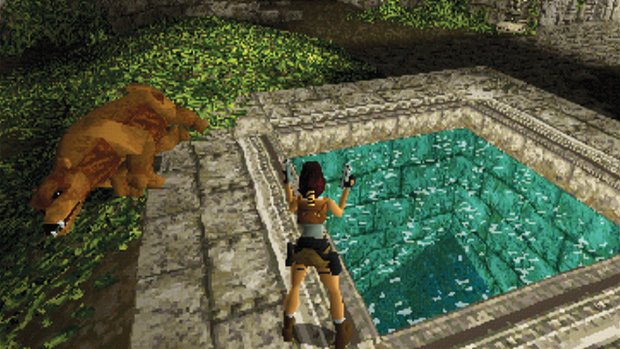Revisiting the Tomb Raider game that started it all...
It’s always a pleasure to revisit the caves and crypts of the 1996 original Tomb Raider and even now, 19 years on, it’s immediately obvious why Lara Croft became the darling of the 32-bit generation. Mario 64 may have just beaten her to the punch when it came to being the first true 3D adventure game, but not in Europe. In Europe, Tomb Raider was a revelation. And where Mario had toadstools, Lara had velociraptors.
Taken at face value, Tomb Raider is the perfect tech demo for the dawn of the 3D era. The camera swoops past a light-sourced, 3D heroine who draws her iconic twin pistols. Backflipping away from a pack of ravenous wolves, she tracks the creatures’ movements with outstretched arms at 30 beautiful frames per second. The hand-crafted keyframe animation is still gorgeous, and Lara commands the screen, grimacing when she fires and swan-diving into translucent waters with flair.

You could have sold countless PS1s on a one-room demo of that alone in 1996, but the adventure game built around that tech is equally marvellous. The aching sense of isolation and feeling of true exploration is remarkable. You can bask in the sunshine streaming in through a gap in the ceiling, feel the history from the carved stone around you and wonder what awful fate befell the mummified corpses dotted around the levels. You’re never rushed.
There’s never an obvious breadcrumb trail that screams ‘go here to proceed’. Just believable, naturalistic cave systems disguising devastatingly precise and fiendish level design, crafted to test your understanding of the… let’s say ‘unique’ controls.
The level geometry may be full of right-angles and set to a grid, but Lara’s movement is anything but locked to compass directions. Despite only supporting digital inputs (DualShock simply didn’t exist in 1996), the sense of freedom in this 3D space immediately rendered supposedly cutting-edge 2D games obsolete. PlayStation literally added a new dimension to adventure games. The future was now.

Today, it’s easy to note the limitations, but it shouldn’t be forgotten that the mid-1990s was also a time of unprecedented technical progress. For instance, CD storage had only just hit mainstream consoles and that leap in audio fidelity was exploited superbly in Tomb Raider. The incidental music remains some of gaming’s most haunting, with monks chanting and plucked melodies soaked in cavernous reverb as you fumble through dark corners and stumble upon treasures.
As a footnote, it’s worth remembering that Lara was not designed to become the first virtual pin-up. Unaffected by marketing committees, TR1’s Lara isn’t overly sexualised. She is the real Lara Croft – Toby Gard’s Lara Croft. Gard was so horrified by what the marketing department did to his creation, he quit the company just two months after the first game was complete. This remains the only true representation of what Tomb Raider was intended to be. A classy, beautiful game starring the most innocent version of what turned out to be PlayStation’s most recognisable heroine.
Sign up to the GamesRadar+ Newsletter
Weekly digests, tales from the communities you love, and more
Click here for more excellent Official PlayStation Magazine articles. Or maybe you want to take advantage of some great offers on magazine subscriptions? You can find them here.
Justin was a GamesRadar staffer for 10 years but is now a freelancer, musician and videographer. He's big on retro, Sega and racing games (especially retro Sega racing games) and currently also writes for Play Magazine, Traxion.gg, PC Gamer and TopTenReviews, as well as running his own YouTube channel. Having learned to love all platforms equally after Sega left the hardware industry (sniff), his favourite games include Christmas NiGHTS into Dreams, Zelda BotW, Sea of Thieves, Sega Rally Championship and Treasure Island Dizzy.



